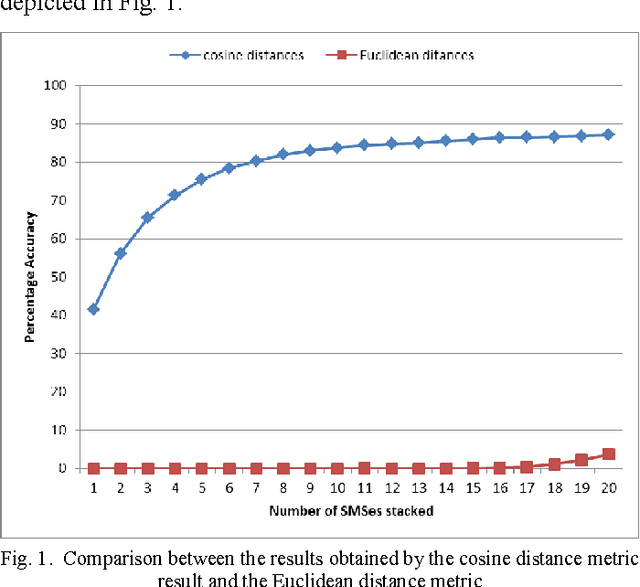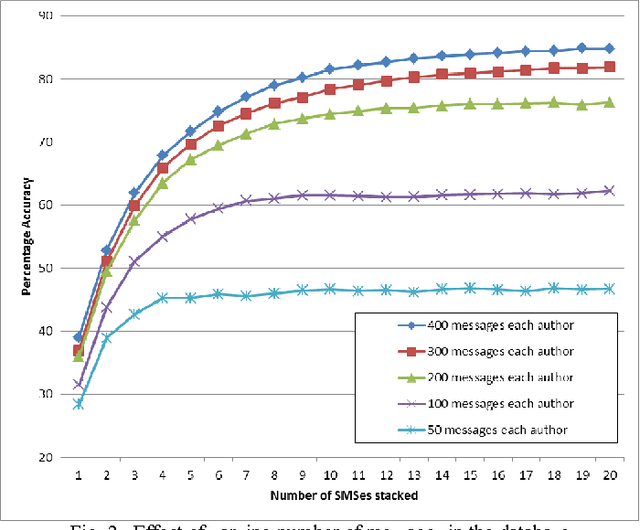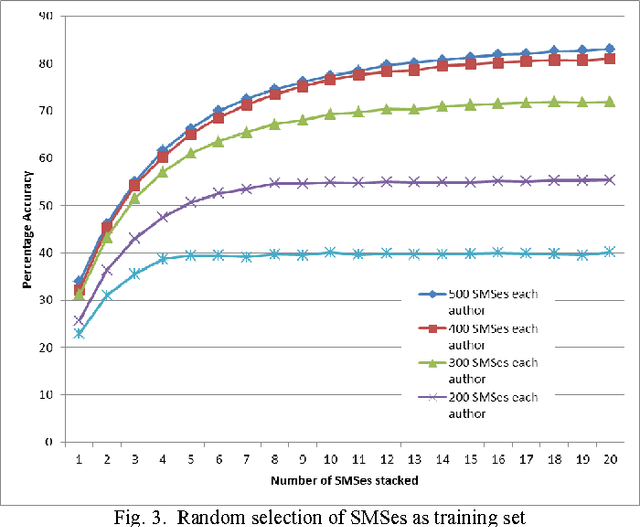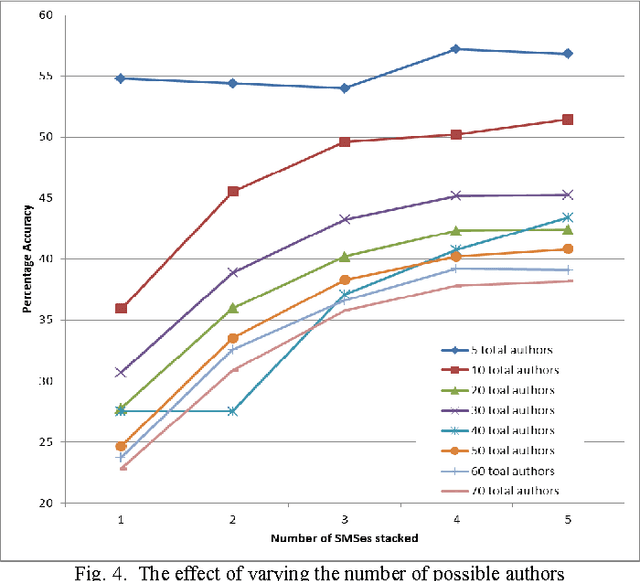Authorship detection of SMS messages using unigrams
Paper and Code
Mar 06, 2014



SMS messaging is a popular media of communication. Because of its popularity and privacy, it could be used for many illegal purposes. Additionally, since they are part of the day to day life, SMSes can be used as evidence for many legal disputes. Since a cellular phone might be accessible to people close to the owner, it is important to establish the fact that the sender of the message is indeed the owner of the phone. For this purpose, the straight forward solutions seem to be the use of popular stylometric methods. However, in comparison with the data used for stylometry in the literature, SMSes have unusual characteristics making it hard or impossible to apply these methods in a conventional way. Our target is to come up with a method of authorship detection of SMS messages that could still give a usable accuracy. We argue that, considering the methods of author attribution, the best method that could be applied to SMS messages is an n-gram method. To prove our point, we checked two different methods of distribution comparison with varying number of training and testing data. We specifically try to compare how well our algorithms work under less amount of testing data and large number of candidate authors (which we believe to be the real world scenario) against controlled tests with less number of authors and selected SMSes with large number of words. To counter the lack of information in an SMS message, we propose the method of stacking together few SMSes.
 Add to Chrome
Add to Chrome Add to Firefox
Add to Firefox Add to Edge
Add to Edge